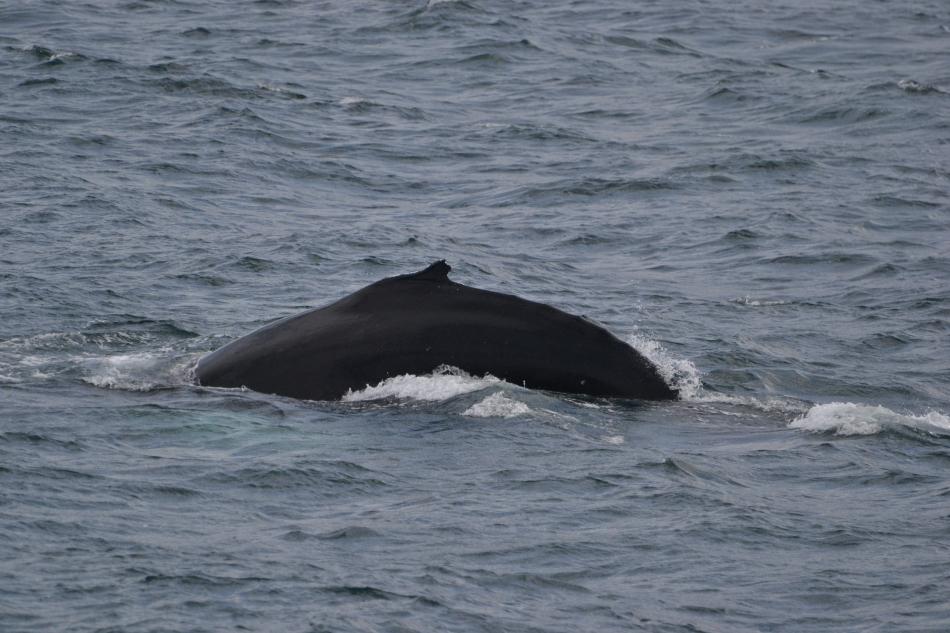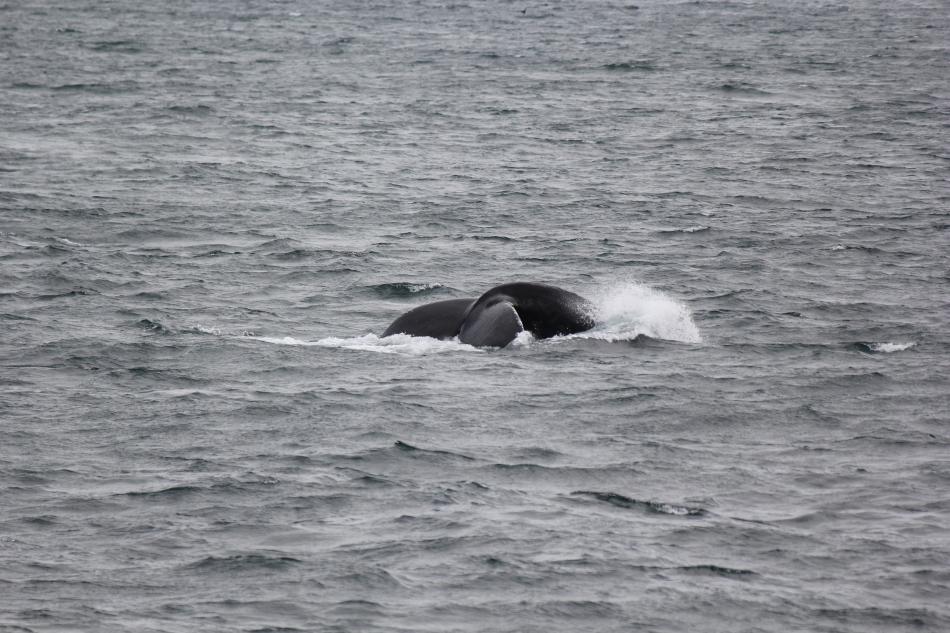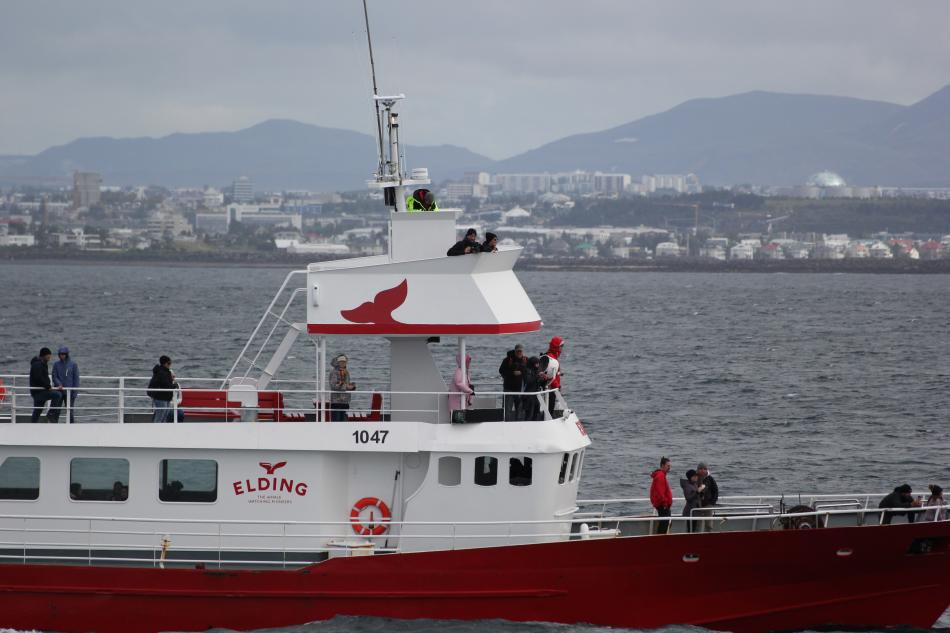Wednesday, 15 June 2022
Today we will be operating on our lovely vessels Eldey and Elding for the 09:00, 10:00, 13:00, 14:00 and 20:30 Classic Whale Watching tours. Make sure to dress appropriately for the tours as it is always colder on sea than on land. If you are prone to seasickness, please consult with our team prior to boarding.
All Premium Whale Watching tours today have been cancelled due to strong winds and unfavourable sea conditions.
- CLASSIC WHALE TOUR | 09:00
- CLASSIC WHALE TOUR | 10:00
- PREMIUM WHALE TOUR | 10:00
- PREMIUM WHALE TOUR | 12:00
- CLASSIC WHALE TOUR | 13:00
- CLASSIC WHALE TOUR | 14:00
- PREMIUM WHALE TOUR | 14:00
- PREMIUM WHALE TOUR | 20:00
- CLASSIC WHALE TOUR | 20:30
Join today's tours:
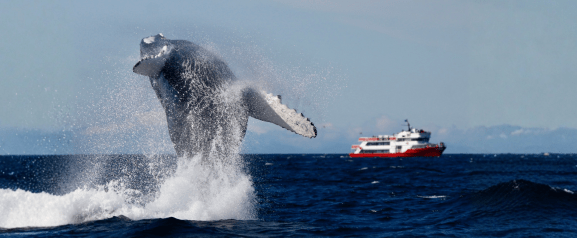
This is the original whale watching tour from Reykjavík! Join our highly enthusiastic and experienced team in the search for whales, dolphins and birds of Faxaflói bay! Most common wildlife encountered are humpbacks, minkes, dolphins and porpoises.

A truly unique whale watching experience - the mystical midnight sun often casts a beautiful orange and pink glow to the mountains surrounding the bay and together with the wildlife it provides quite a unique perspective.
CLASSIC WHALE TOUR 09:00
Report from Eldey: this morning started very well with very good sea conditions to spot some whales, dolphins and porpoises. The passengers were particularly quite motivated to spot the animals in the area. We started to arrive in an area with a high chance to see the animals as so many birds were present feeding. After few mins, we spotted our first blows of 2 Humpback whales and we managed to get closer to have some nice pictures of fluke for research. More humpbacks were in the area with one who breached in the distance. It started at some point to be quite crowded with other boats around so we decided to leave the individuals alone in order to minimize the impact we have on them. We headed to another area but after few minutes, we already spotted more humpback whales from their blows. They were all mostly quite busy to find some food as we saw a lot of flukes for deep dives and less interactions with the boat. It was still quite nice to watch them and see that this bay is still full of life. We started then to head back to Reykjavik and in our way back, we spotted one of the tricky cetacean to spot, 1 minke whale. This individual were alone and very small but very close to our boat and follow us for few minutes. A very nice day full of whales in the bay.
- Enorha Guimard
CLASSIC WHALE TOUR 10:00
Report from Elding: Towers of clouds rose above us on all sides and the two mountains towards the north were showered in a magical mist bounded by warm southerly winds. Many whale watching boats were already at sea and we could see some whales as we passed by, choosing not to stop however as we did not want to discomfort the animals by surrounding them with boats. However soon after we found another 4 whale spouts on the horizon and headed straight towards them. We discovered a humpback whale that was taking regular dives, gracefully raising its fluke as it submerged to hunt prey. Seeing a pair of blows on the horizon we decided to leave this individual and go towards what we found out was a mother and juvenile humpback whale pair. These animals were again taking regular dives, indicating a feeding behaviour, as more blows shot into the sky in the distance. However as time was running out we decided to see if we could an animal who was a little bit more energetic and willing to perform for us, having heard that a pod of dolphins were present in the bay we headed in the direction of their last sighting. As we approached we found another whale, again diving, and some white beaked dolphins nearby, however just as we were going to take a closer look at the dolphins, the whale surfaced and waved hello at us, slapping its pectoral fin on the water's surface. Sadly after only a few slaps the animal disappeared beneath the waves, and we had to return to Reykjavik on time. Amongst the scattered drizzles of rain we managed to find 4 humpback whales up close with several on the horizon and a pod of at least 2 white beaked dolphins and possibly more due to the short nature of the sighting.
- Liam van Walsum
CLASSIC WHALE TOUR | 13:00
Report from Eldey: The sea was quite calm compared to the predicted weather forecast for today and the sun was shining over the bay this afternoon. We sailed to a hotspot area and quickly spotted several blows at various distances. With so many humpback whales, we almost didn't know who to follow - quite a good problem to have. The whales helped us decide when a breaching individual lured us toward its big splashes. The humpback breached twice and we could see its full body out of the water even at a substantial distance. Upon reaching the area the whale had calmed down but we were able to stay with it for some surfaces. Then, out of nowhere, the whale breached again and at the same time in the distance we could see the splashes of another breaching humpback! With all that, we were only about halfway through the tour and we still had time to stay with a small individual that came up right next to our boat. It then joined two other humpback whales in an area with a high abundance of fish, but we left towards Reykjavík. There, our boat Elding had found a pair of humpback whales who surfaced frequently and also often showed us their impressive fluke. With so many sightings it's easy to lose count but our researcher counted at least 8 different humpback whale individuals - not a bad count for one single tour!
- Eline van Aalderink
CLASSIC WHALE TOUR 14:00
Report from Elding: This tour proves it - the weather forecast in Iceland can't always be trusted. It was much better than we expected and we actually stayed dry until the last 30 minutes of the trip. As we always say to everyone, one of the things we look out for are spouts. Today, we found two humpback whales! They looked like a mother and a calf and they were both swimming peacefully as they did not care about us. It was very interesting to see that the mother had some cookiecutter shark markings. We could have stayed with them the entire tour but we wanted to also show our passengers more individuals, thus we moved on. It didn't take long until we found another humpback. In spite of the long dives, that prove our patience, this time this individual was absolutely fantastic, coming so close we could have touch it and also once it rolled on a side and human watched us. So the wait was very worth the venture. Everyone returned back to Reykjavík with a huge smile on their face.
- Estel Sanchez
Whales seen on today's tours:

The Humpback Whale is quite spectacular undergoing the longest migration of any mammal (5176miles/8334km one way), attracting females by singing to them and of course their energetic nature. On many occasions humpbacks have been seen breaching, tail slapping, fin slapping, blowing bubbles and spy hopping just to mention a few. The humpback is also one of the larger whales we encounter

The Minke Whale is the most common whale around Iceland and actually the world thus it is one of the main species we encounter on our whale watching tours. It is one of few species that don’t mind coming to shallower waters like here in Faxaflói Bay to feed on the abundant food available to them.

The white-beaked dolphin is the most common dolphin found in the surrounding waters of Iceland and is seen not only in the summer but winter too usually in larger numbers, hundreds sometimes. When feeding they show energetic behaviour such as breaching out of the water and coming down with a big splash and bursts of fast swimming.
Birds seen on today's tours:
Eider duck, Northern fulmar, Atlantic puffin, Arctic tern, Greater black-backed gull, Lesser black-backed gull, Herring gull, Arctic skua, Northern gannet, Black-headed gull
Birds seen on today's tours:

The eider duck is the most common duck in Iceland and can be seen along the coast and in some lakes close to the ocean. The down (small feathers they use to line their nests) was collected as far back as the 14th century and almost lead to their extinction in the 19thCentury.
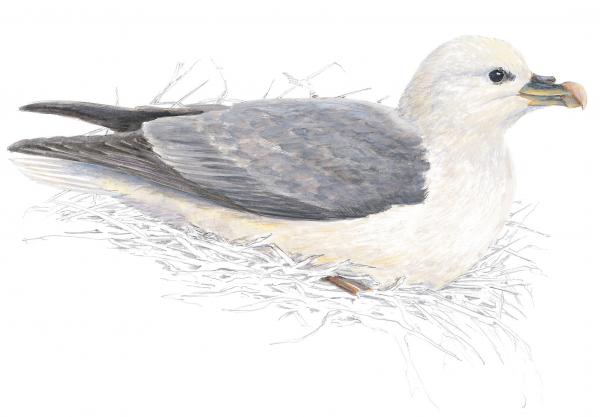
The fulmar comes from the tubenosed family of seabirds, which also include petrels, albatrosses and shearwaters. Their nasal passages (naricorns) are located on top of their bill and used for breathing, secreting salt and for the olfactory system. Their genus name Fulmarus comes from the Old Norse words full meaning foul, and mar meaning gull.

Puffins are part of the Auk family of seabirds that also include razorbills and guillemots. They can fly, swim, and dig burrows and are one of three species of puffin in the world. Over half the world’s population of Puffins comes to Iceland to breed. Iceland also has the largest Atlantic Puffin colony in the world. The Westmann Islands in the south has about 700,000 nesting pairs.
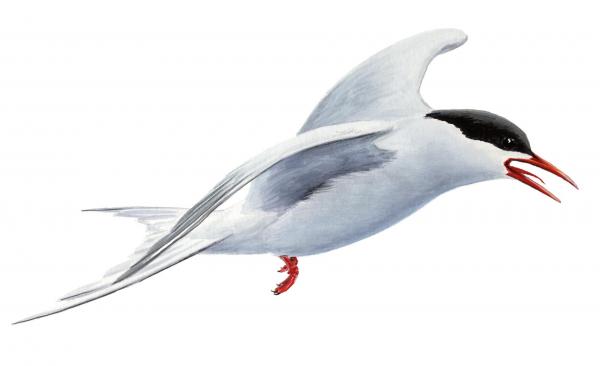
The arctic tern undergoes the longest migration than any known animal on the planet. Every year they travel about 70,900 km (44,300 miles) from the Arctic to the Antarctic and back again. One chick ringed on the Farne Islands in June 1982 was found in Australia in October, travelling about 22,000km (13,640 miles) in just 3-4 months.
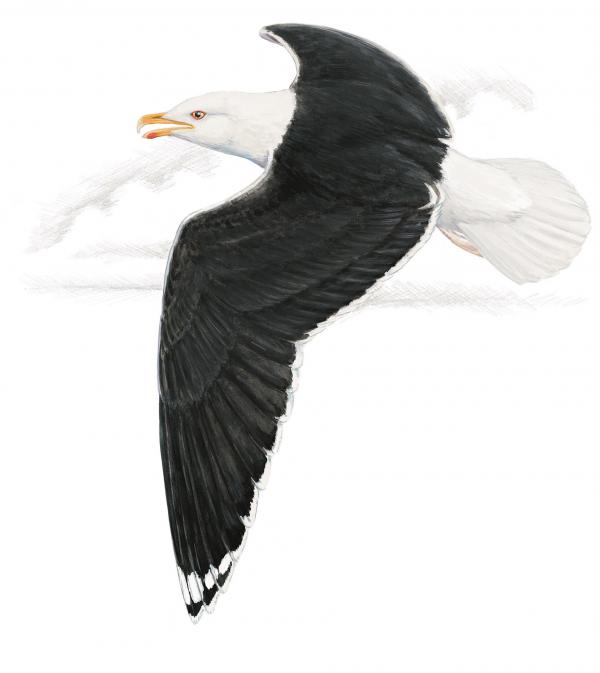
There are two forms of black backed gull, the lesser and the great. The great black-backed gull is identified with its yellowish legs whereas the lesser black back has pinkish legs. The great black-backed gull is the largest of the gull family (Laridae). The red spot on the bill is for the chicks to have a focal point when the parents regurgitate their food.
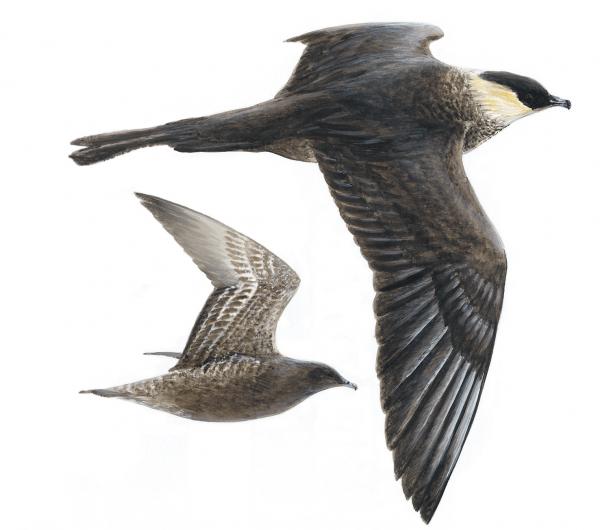
The arctic skua is the main skua species that we encounter on our tours. They are well known for their parasitic behavior called kleptoparasitism, stealing eggs, chicks and fish from other seabirds. The air battles are particularly impressive to watch.
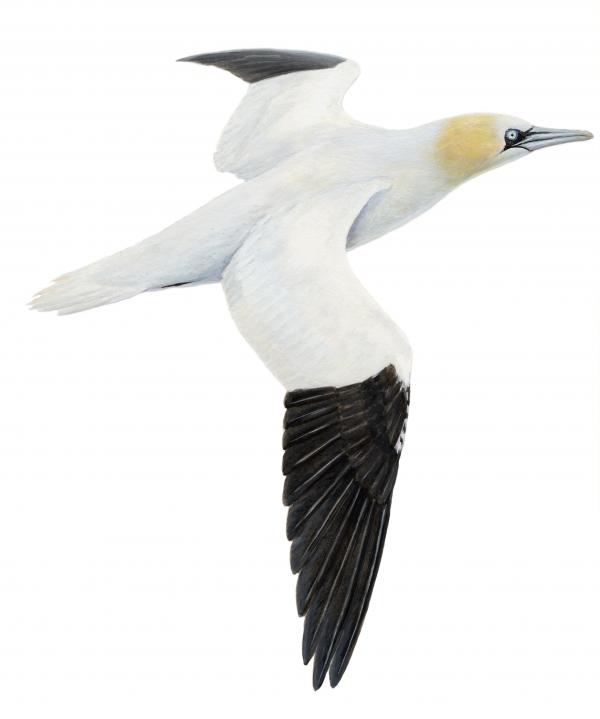
We have one of the largest northern gannet colonies in the world just 10 miles of the Reykjanes Peninsula called Eldey (Fire Island). Roughly 25,000 pairs breed on this island every summer.
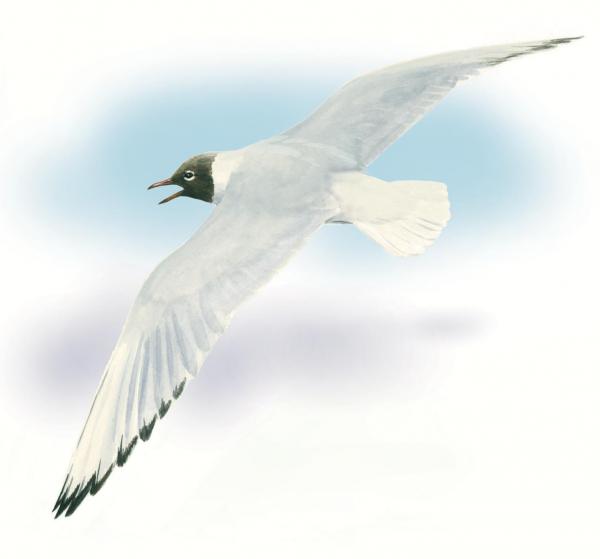
The black-headed gull is small and easily recognisable. In the winter they loose their black head but can still be recognisable by the black spot on both sides of the head behind the eye. Its scientific name means “laughing gull” because of how loud it is and the noise it makes at colonies. They are observed mainly close to the shore or inland.
Request photos from your tour:
Our guides do their very best to take photos on our Classic Whale Watching tours to share with our passengers. Please email elding@elding.is to see if any photos were taken on your tour.
CLASSIC WHALE TOUR 20:30
Report from Elding: Conditions settled more as the day drew to a close, but we could still feel a small swell arriving from the south west, The wave could be felt as we journeyed towards our preferred search areas but did not pose any danger. Within a short sail from the harbour we encountered our first sighting of the trip as a humpback whale surfaced 50 metres at the stern. We were able to follow the individual for some time as it traveled in a consistent direction, performing dives of around 4-5 minutes. It provided great viewing opportunities as a result. We were aware of the presence of more whales that were seen earlier in the day and decided to take a search in more areas across the bay. Two tall blows could be seen from a great distance but as we approached and waited, the blows disappeared and the whales eluded us. Time started to run out and we turned towards the city but we were able to find two more whales in a different area. These were different individuals to the blows seen earlier however, so in total at least five whales occupied the bay. The two humpbacks moved very close to the boat on a few occasions, lifting the flukes for deep dives.
- Mike Smith




